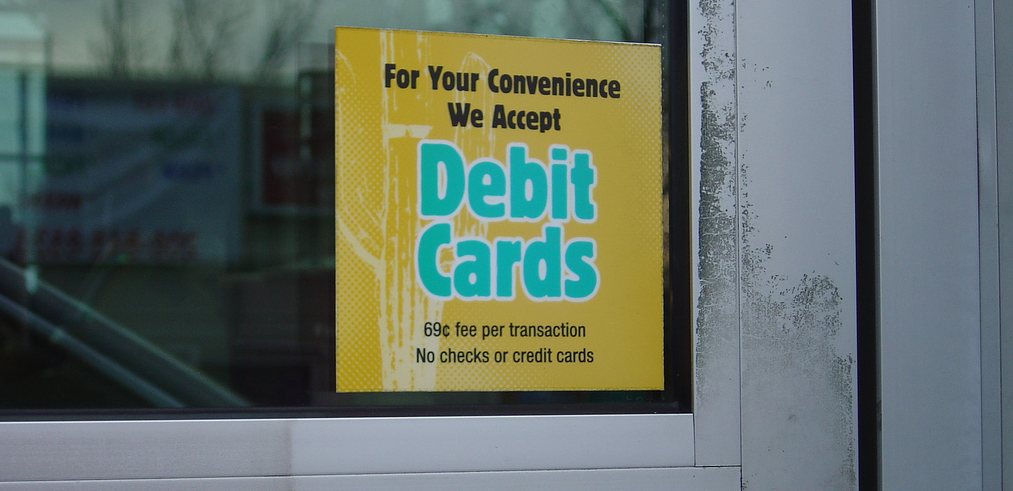As Fewer People Overdraft, Banks Are Raising Overdraft Fees
Since 2010, debit card overdraft protection has been opt-in only, meaning checking account customers have to actively join the program.
While banks have done their best to hide this fact or provide misinformation — like “overdraft protection protects you from bounced-check fees” — to consumers, many have just said no to it, and some folks have just become more conscious of what money they have so they don’t have to worry about overdrafting.
What that means, alas, is that the banks are making slightly fewer billions every year from overdraft fees than they were before. So what’s a bank to do? That’s right — raise the fees to balance things out.
The Wall Street Journal reports that while the average yearly number of overdrafts per account has dropped from 9.8 in 2009 to 7.1 in 2012, the median overdraft fee per transaction has increased during that time from $26 to its current record-high of $30, with some banks charging upwards of $50 per transaction beyond the overdraft line.
Additionally, some banks are selling slightly less-expensive alternatives to standard overdraft protection. Like the Wells Fargo service that allows a Wells customer to link two accounts at the bank so that if one is overdrawn, the money can be transferred out of the other. For this, the bank charges a fee that is only about one-third of its usual $35/transaction overdraft fee.
In defense of overdraft protection, one attorney in Arkansas tells the Journal that he is fine with being hit with more than a dozen $17.50 charges per year for his overdrafting, saying he’d rather pay the fees and know that his bills are getting paid.
But wouldn’t it make more sense for him to put those purchases on a credit card? We’re assuming that he means he generally has the money to pay his bills but that sometimes things get screwy and he overdrafts. If that’s the case, then putting them on a credit card that is paid off in full every month would save him hundreds of dollars a year. Just a thought.
The Consumer Financial Protection Bureau has been looking into overdraft fees since last year. It estimates that some 60% of banks’ fee-based revenue comes from overdrafts.
In an effort to see whether fees charged by banks are in line with the actual costs for providing services, the CFPB has asked larger financial institutions to provide detailed breakdowns of where their fees come from. However, the larger banks are putting up a fight because the current CFPB proposal exempts banks with less than $1 billion in revenue from the reporting requirement.
The bigger banks say that’s unfair because it’s the smaller, mom-and-pop banks that are more reliant on fees for their total yearly revenue. Meanwhile, medium-sized banks are putting up a fuss claiming that the exemption threshold should be at $10 billion, allowing them to get out of disclosing this information.
Want more consumer news? Visit our parent organization, Consumer Reports, for the latest on scams, recalls, and other consumer issues.


